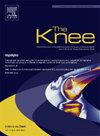Low-dose exposure to tranexamic acid has no significant toxic effect on human cartilage
IF 2
4区 医学
Q3 ORTHOPEDICS
引用次数: 0
Abstract
Background
Recent studies have raised concerns about the potential cytotoxic effects of tranexamic acid (TXA) on cartilage. This study aimed to evaluate the safety of low-dose TXA exposure on human cartilage.
Method
In this ex-vivo study, 30 patients with a varus osteoarthritic knee undergoing total knee arthroplasty (TKA) were enrolled. During the surgery, a set of six osteochondral plugs was harvested from the apparently intact lateral condyle of each patient’s femur, resulting in a total of 180 plugs. Subsequently, all three plugs of each set were randomly exposed to one of the TXA treatment groups: 1 mg/ml (TI group), 5 mg/ml (TV group), or 10 mg/ml (TX group) of TXA. The remaining three plugs of each set were assigned to the control group and exposed to 0.9 % saline as a match for comparison. The effects of TXA dose and exposure time on cell viability were assessed using acridine orange/propidium iodide staining at baseline, 3, and 6 h post-exposure.
Results
Cell viability decreased over time in the TI, TV, TX, and control groups compared with their baselines (P = 0.006, P < 0.001, P = 0.001, P < 0.001, respectively). However, the differences in the trend of decline were not statistically significant between groups (P = 0.3), and direct comparisons among TXA concentrations and saline control at baseline, 3, and 6 h after exposure showed no statistically significant difference in cell death (P = 0.538, P = 0.256, P = 0.287, respectively).
Conclusions
Exposure to low-dose TXA (≤10 mg/ml) for up to 6 h did not cause significant toxic effects on human cartilage.
低剂量暴露于氨甲环酸对人体软骨没有明显的毒性作用
最近的研究引起了人们对氨甲环酸(TXA)对软骨的潜在细胞毒性作用的关注。本研究旨在评估低剂量TXA暴露对人体软骨的安全性。方法在这项离体研究中,入选了30例接受全膝关节置换术(TKA)的内翻性骨关节炎膝关节患者。在手术中,从每位患者的股骨外侧髁上取下一组6个骨软骨塞,共180个塞。随后,每组的所有三个插头随机暴露于TXA处理组之一:1mg /ml (TI组),5mg /ml (TV组)或10mg /ml (TX组)的TXA。每组的其余三个塞被分配给对照组,并暴露于0.9%的生理盐水中作为比较的匹配。使用吖啶橙/碘化丙啶染色法在基线、暴露后3和6小时评估TXA剂量和暴露时间对细胞活力的影响。结果TI组、TV组、TX组和对照组的细胞活力随着时间的推移而下降(P = 0.006, P <;0.001, P = 0.001, P <;分别为0.001)。但各组间下降趋势差异无统计学意义(P = 0.3),暴露后基线、3、6 h TXA浓度与生理盐水对照直接比较,细胞死亡差异无统计学意义(P = 0.538、P = 0.256、P = 0.287)。结论低剂量TXA(≤10 mg/ml)暴露6h对人体软骨没有明显的毒性作用。
本文章由计算机程序翻译,如有差异,请以英文原文为准。
求助全文
约1分钟内获得全文
求助全文
来源期刊

Knee
医学-外科
CiteScore
3.80
自引率
5.30%
发文量
171
审稿时长
6 months
期刊介绍:
The Knee is an international journal publishing studies on the clinical treatment and fundamental biomechanical characteristics of this joint. The aim of the journal is to provide a vehicle relevant to surgeons, biomedical engineers, imaging specialists, materials scientists, rehabilitation personnel and all those with an interest in the knee.
The topics covered include, but are not limited to:
• Anatomy, physiology, morphology and biochemistry;
• Biomechanical studies;
• Advances in the development of prosthetic, orthotic and augmentation devices;
• Imaging and diagnostic techniques;
• Pathology;
• Trauma;
• Surgery;
• Rehabilitation.
 求助内容:
求助内容: 应助结果提醒方式:
应助结果提醒方式:


